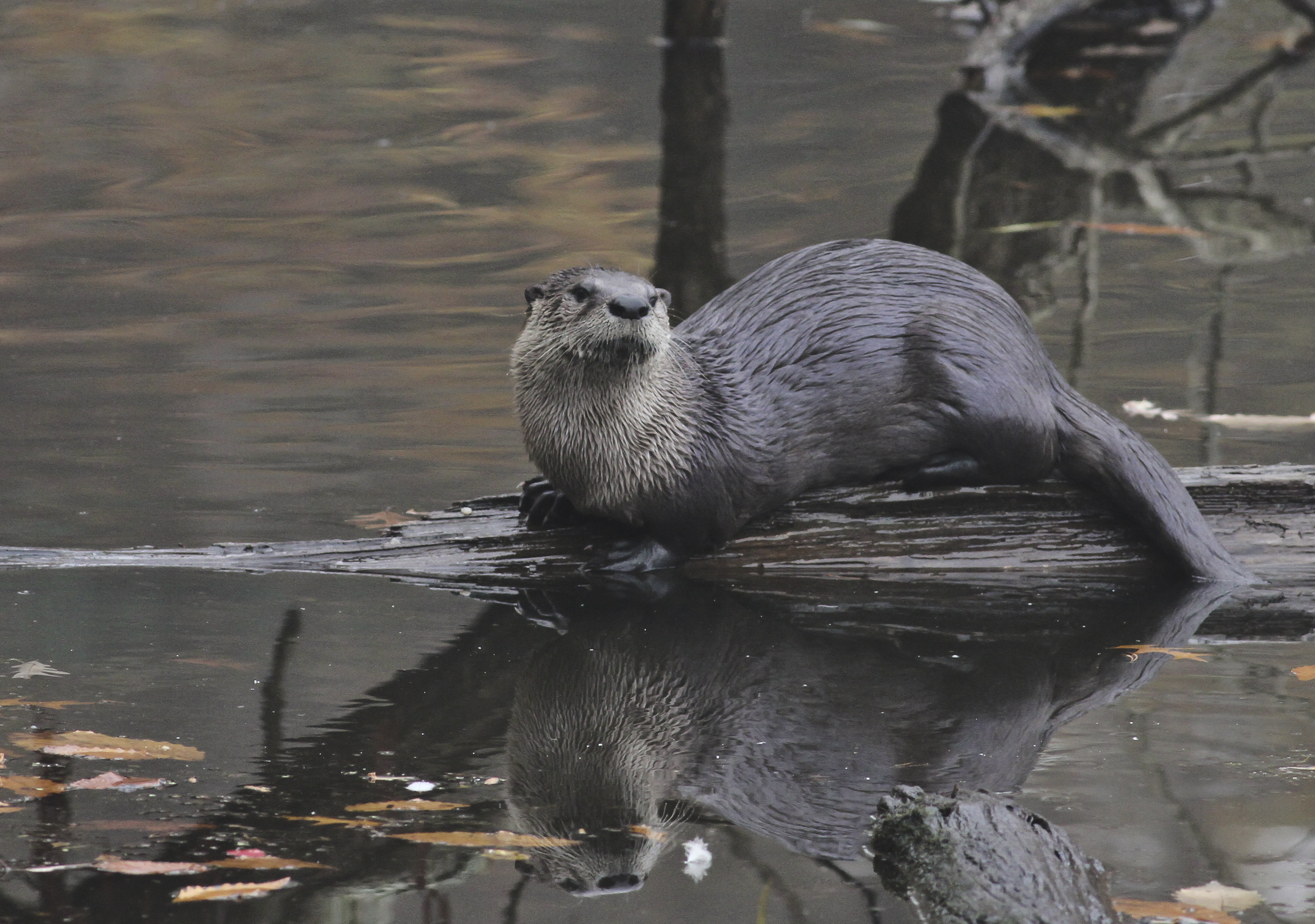The Return of the Otters

By Wayne Bierbaum
Over the past two months, I have seen four snakeheads in the South River in Anne Arundel County. They were all very large, all probably over 28-inches long. Since I saw the first one, I have been determined to remove them or at least spend time trying. In other words, I turned back to my Florida fishing skills and started casting lures in likely places. I even consulted with FishTalk’s Zach Ditmars about what lures to use.
That is why I was out in a canoe at 6:45 a.m. and throwing a 3-inch paddletail on a Willow Jig with 20-pound braid and a 25-pound leader. My sister, visiting from Buffalo, was in the front of the canoe. We were turning a corner into a small tributary and I had just hooked a 20-inch striped bass when I heard a snorting sound coming from the area around the water’s edge. Because I run into them often, I thought it was likely a deer but then my sister whispered, “There are two otters.”
As I lifted the striper high enough to release it, the snorting sounds became louder—almost a bark. I put the fishing pole down and lifted my camera but it was too dark for a photo and the otters, which appeared to be a mother and pup, dove underwater and slipped away.
A short time later there was suddenly the sound of a barking dog coming from a nearby house, so I think the otters eventually left by land.
For me, finding river otters in a South River creek was wonderful. This was the first that I had seen there since 2017.
The Maryland Department of Natural Resources states that otters are common throughout the Chesapeake Bay area but they are uncommon in salty ocean water. They are secretive and rarely seen. In fact, the first time I was aware of an otter on the South River was when, in 2007, I was on the edge of the river taking star photos (obviously at night) and I heard one swimming by and loudly exhaling.
Evidence of their nocturnal prowlings could be found on my neighbor’s swim platforms. The otters would use the platforms as outdoor tables and leave fish parts, scales, and blood behind.
Because I learned where their favorite hangouts were, I saw them during the spring and summer about once a month. I even witnessed a family of five playing on the creek banks and fishing. Most of the time, I found them just before sunrise but then, around the winter of 2017, they disappeared.
I think the reason they disappeared for so long was the severe and prolonged cold spell after an ice storm but it also could have been the increase in boating activity in the upper part of the creeks or maybe they were trapped. Otters eat a wide variety of animals that they find in and around water. Insects, crayfish, frogs, birds, snakes, and all sorts of fish are on their menu. To catch the food they are adept swimmers and can hold their breath for five minutes. They have long sensitive whiskers to locate prey by feel.
Otters will take advantage of docks with lights that attract fish. They also fish by moonlight. Otters make multiple denning holes in the banks to rest and rear their young. Female otters can have one to six offspring every year. Otters are not monogamous but the fathers are known to help with the care of the young.
The American river otter is one of the 14 fur-bearing animals hunted and trapped in Maryland. All but seven counties— including Anne Arundel—have a bag limit of 10 per year per person (season Dec 15 to March 15th). The seven other counties have limits of one or two per year. The pelts are required to be registered and tagged.
Otters are primarily hunted for taxidermy purposes. Otter fur is very fine and dense, making it warm and almost waterproof, and in demand for clothing. Now we have new lightweight and warm fabrics, so the use of pelts in clothing is becoming obsolete. Yet, there is a small market in the U.S. and Canada for hats, headbands, and collars, plus the occasional coat.
Most of the pelts are sent overseas but that market is regulated. The value of one pelt is about $250 last I checked.
The population of American river otters has been on the rise for the last 50 years. A study published in Fish and Wildlife Management Journal in June 2020 said that in 1977, through unrestricted hunting and habitat degradation, river otters were extirpated (locally extinct) in 11 states and in severe decline in nine more. Habitat restoration began at that time and otters were reintroduced to areas of low population in 23 states. The river otter fur trade has been internationally regulated and trapping was restricted in all states. A 2020 population estimate, done through trapping reports, found that river otters have returned to all of their prior range. They are now at a population expansion that is 90 percent of their original (although not well-defined) distribution and which is actually 2.3 percent greater than their estimated potential range.
Their potential U.S. range was estimated in 1998 as 2,145,260 square miles. It appears that hunting regulations, land restoration, and reintroduction can help mitigate overhunting and harmful land management.
For an update on my efforts to catch a snakehead: I went out canoeing again by myself but still have not caught one. I did have one break off on someone’s dock. It turns out that a large fish can easily tow a canoe around and paddling with one hand is awkward.
